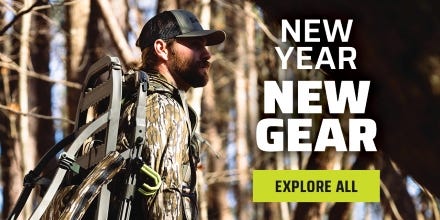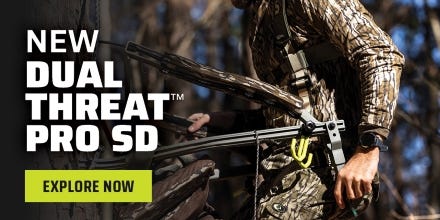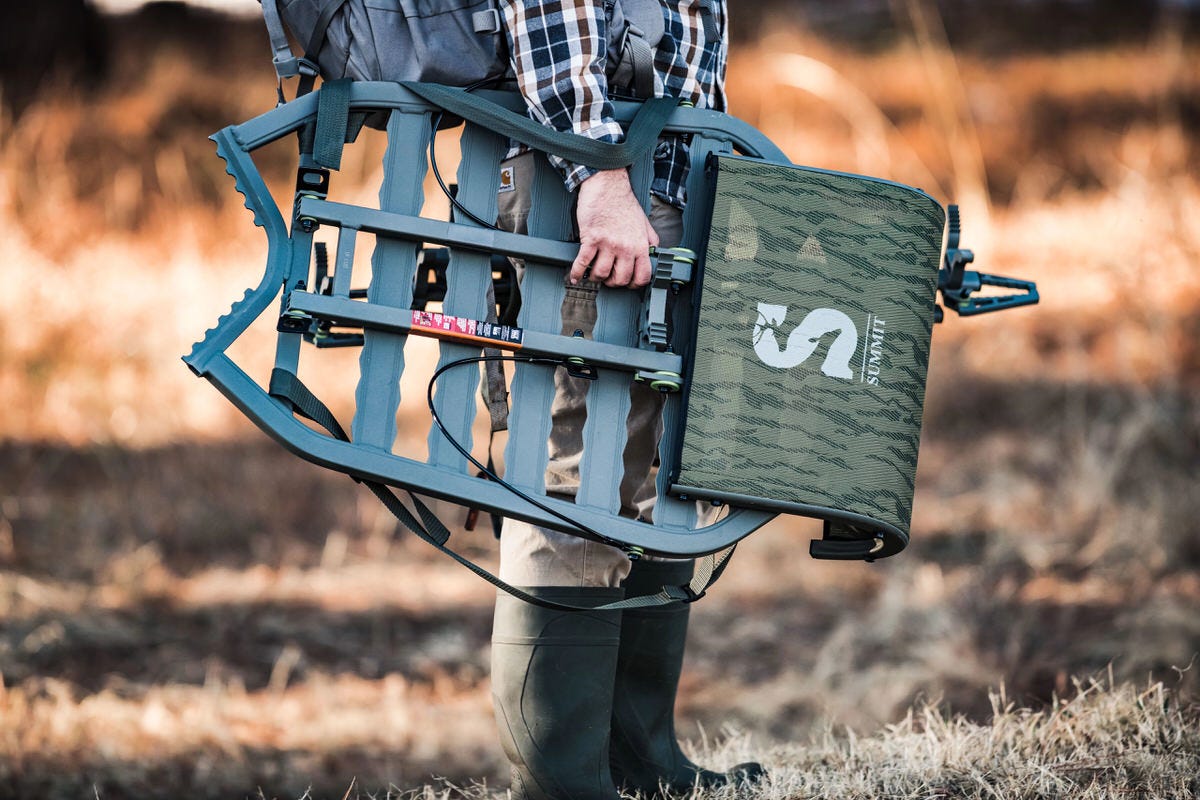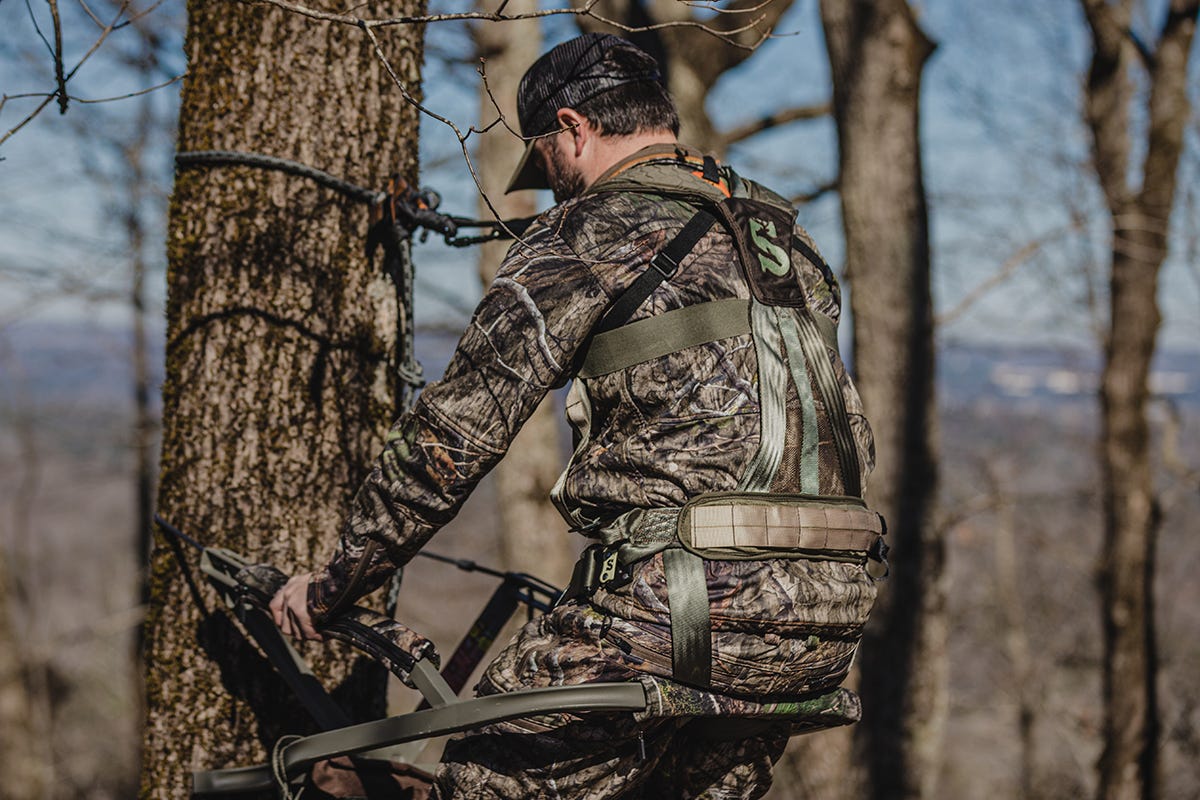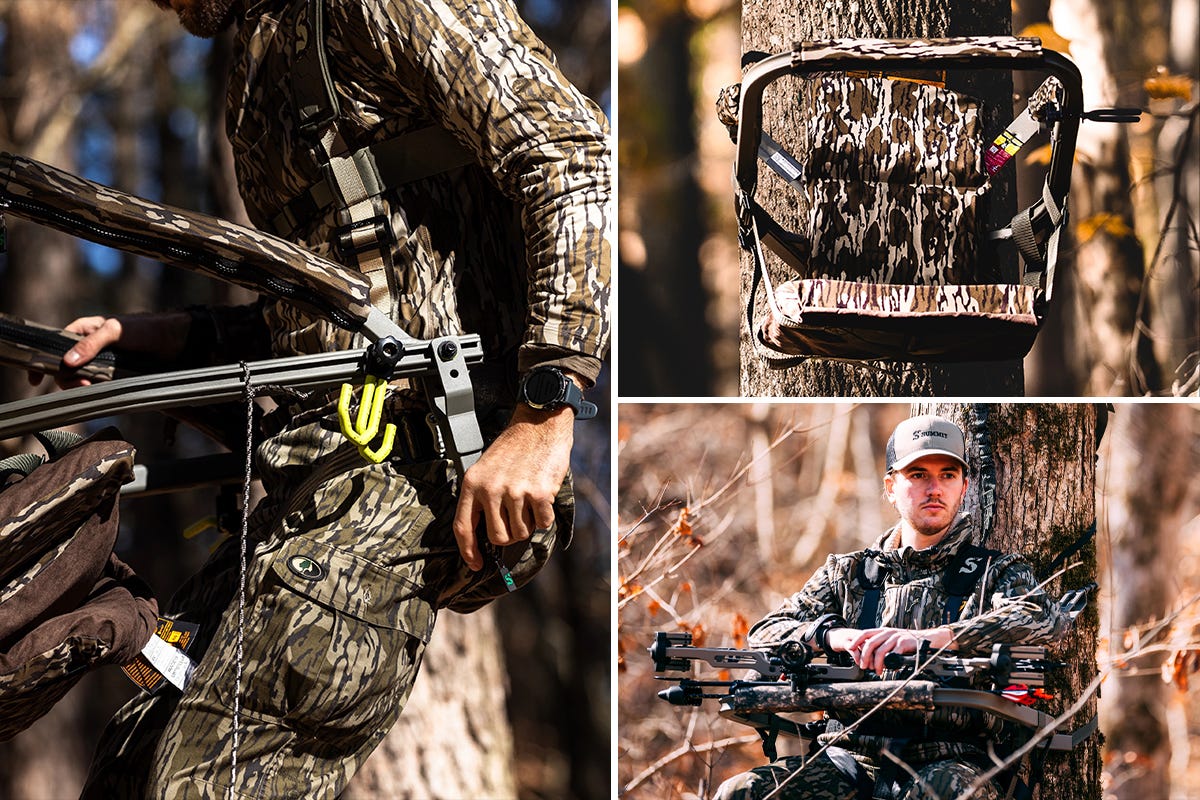- Dec 9, 2013
Beat Hunter Pressure on Public Land
I caught the movement out of the corner of my eye – something crossing behind me and to my right. My heart jumped and pulse rate instantly increased, but when I slowly turned my head to get a look, it was another hunter, and not the buck that made the rub 20 yards in front of my stand. The hunter moved on through the little draw and never saw me 25 feet up a tree in my Summit climber.
Just prior to that my cell phone vibrated and indicated I had a text message. It was from my hunting partner, who reported that he'd just had a hunter walk through his area.
It had been years since I'd hunted public land – not because I'm a rich landowner or that I hunt private lodges every year, but because my family owned a small farm with plenty of deer. Unfortunately, the land was sold and I was out of a place to hunt.
The most constant piece of advice concerning hunting public land is that hunters need to get well away from roads and parking areas and foot-it deeper into the area to see consistent success. The episode at the beginning of this article occurred on our first evening hunt, and we had not heeded that most basic rule.
One big difference between hunting public and private land is that scouting is more complicated due to not only scouting for deer, but also keeping in mind likely places others will hunt. Escape routes also take on higher importance, especially if you plan on hunting on weekends or other high-activity days like opening morning.
First, get an aerial photo of the land (do a search on the internet for aerial photos) or a simple map provided by your state's wildlife or game and fish organization. An aerial photo is so much better than a map because you can see geographical features. Mark all of the parking areas, roads and ATV trails with a highlighter. As a rule, don't even begin scouting until you're 100 yards away from any of the areas you've highlighted.
Identify potential bedding and feeding areas. Plan to hunt closer to the bedding areas in the morning and closer to the feeding areas in the evening.
Next step is visiting the area to scout, first by driving the roads then by footing it. Check out the areas you've identified on your maps as potential bedding and feeding areas.
One aspect many don't figure into the equation is water. If you're scouting a huge block of land that has only one water source, that pond or lake takes on more importance. Be aware, however, that if it's easily accessible by humans it will be hit hard during the early season. A remote creek or pond – no matter how small – can be a hotspot, especially if it's been a dry year.
Tracks you see during summer scouting trips are encouraging but are not a sure indication of where the deer will be during the season. Food sources change, hunter pressure pushes deer to different areas of their home ranges, and normal transitions will alter deer's movement.
Depending on how often you can visit the area, setting up a remote bait station can ensure deer visit the area near your stand (if state and federal law allow). It also means long walks carrying bags of corn. Setting up a mineral lick also provides a reason for deer to visit. Do this close to a road or trail, however, and you'll likely find another hunter in your spot come opening morning.
There are many reasons you need to get away from the crowd, but two stand out, and surprisingly both are hunter characteristics. It takes effort to get back away from the roads and trails, and many hunters won't put out that effort. It can be because of time – simply not having enough time to get in and get out then get to work. And, it's just easier to trek in a little rather than a lot.
The other reason is because hunters are concerned about getting lost. This can be a real concern in huge blocks of public land or wildlife management areas. A GPS unit solves that problem. Inexpensive units cost around $100 and will guide you within feet of your destination. Always carry a compass as a backup.
Another way to avoid other hunters when on public land is to hunt when few other hunters will be there. This means avoiding opening day and weekends. Mornings during the week attract fewer hunters than evening hunts because many locals can get off work a little early and hit the woods for a couple hours before dark.
Look for bow-only areas and hunt these even during modern gun season. Archery only areas can be incredibly productive during the peak of the rut, especially if they're surrounded by land open to rifle or shotgun hunting.
Research has shown that deer do not head to the next county when the guns start going off, though, so don't expect a parade of deer flowing into an archery only area. Studies show that deer normally do not leave their normal home ranges when pressured, but instead move to another area of their home range and cut down the amount of time they move during the day. Normally, a few weeks after the opener these deer should have calmed down.
Don't stop scouting once the season begins. While you might have located potential feeding areas – persimmon trees, acorns, etc. – during summer scouting trips, you can really pinpoint a buck after it begins making rubs and scrapes. Locate several freshly rubbed trees in one small location and you've found an area a buck is using on a regular basis.
When hunting on public land, scent is of utmost importance. In addition to the scent elimination process you normally go through prior to every hunt – shower with nonscented soap, hunting clothes laundered in nonscented laundry detergent, etc., -- take along a scent elimination product to the stand and use it there. The deer on pressured public lands are always on the alert for human odor, and you've got to do everything you can to eliminate yours.
If you plan on using a deer urine as a lure, avoid blends. Everyone else in the woods is using a blend, and the deer know it.
When walking to distant stands, use a drag soaked in deer urine. Trail it to the stand and hang it out front. This technique really shines from the chase phase until the post-rut.
There are plenty of good bucks taken from public lands and wildlife management areas. It takes a little more effort, but get back away from the human encroachment and you too can take a big public land buck.
I caught the movement out of the corner of my eye – something crossing behind me and to my right. My heart jumped and pulse rate instantly increased, but when I slowly turned my head to get a look, it was another hunter, and not the buck that made the rub 20 yards in front of my stand. The hunter moved on through the little draw and never saw me 25 feet up a tree in my Summit climber.
Just prior to that my cell phone vibrated and indicated I had a text message. It was from my hunting partner, who reported that he'd just had a hunter walk through his area.
It had been years since I'd hunted public land – not because I'm a rich landowner or that I hunt private lodges every year, but because my family owned a small farm with plenty of deer. Unfortunately, the land was sold and I was out of a place to hunt.
The most constant piece of advice concerning hunting public land is that hunters need to get well away from roads and parking areas and foot-it deeper into the area to see consistent success. The episode at the beginning of this article occurred on our first evening hunt, and we had not heeded that most basic rule.
One big difference between hunting public and private land is that scouting is more complicated due to not only scouting for deer, but also keeping in mind likely places others will hunt. Escape routes also take on higher importance, especially if you plan on hunting on weekends or other high-activity days like opening morning.
First, get an aerial photo of the land (do a search on the internet for aerial photos) or a simple map provided by your state's wildlife or game and fish organization. An aerial photo is so much better than a map because you can see geographical features. Mark all of the parking areas, roads and ATV trails with a highlighter. As a rule, don't even begin scouting until you're 100 yards away from any of the areas you've highlighted.
Identify potential bedding and feeding areas. Plan to hunt closer to the bedding areas in the morning and closer to the feeding areas in the evening.
Next step is visiting the area to scout, first by driving the roads then by footing it. Check out the areas you've identified on your maps as potential bedding and feeding areas.
One aspect many don't figure into the equation is water. If you're scouting a huge block of land that has only one water source, that pond or lake takes on more importance. Be aware, however, that if it's easily accessible by humans it will be hit hard during the early season. A remote creek or pond – no matter how small – can be a hotspot, especially if it's been a dry year.
Tracks you see during summer scouting trips are encouraging but are not a sure indication of where the deer will be during the season. Food sources change, hunter pressure pushes deer to different areas of their home ranges, and normal transitions will alter deer's movement.
Depending on how often you can visit the area, setting up a remote bait station can ensure deer visit the area near your stand (if state and federal law allow). It also means long walks carrying bags of corn. Setting up a mineral lick also provides a reason for deer to visit. Do this close to a road or trail, however, and you'll likely find another hunter in your spot come opening morning.
There are many reasons you need to get away from the crowd, but two stand out, and surprisingly both are hunter characteristics. It takes effort to get back away from the roads and trails, and many hunters won't put out that effort. It can be because of time – simply not having enough time to get in and get out then get to work. And, it's just easier to trek in a little rather than a lot.
The other reason is because hunters are concerned about getting lost. This can be a real concern in huge blocks of public land or wildlife management areas. A GPS unit solves that problem. Inexpensive units cost around $100 and will guide you within feet of your destination. Always carry a compass as a backup.
Another way to avoid other hunters when on public land is to hunt when few other hunters will be there. This means avoiding opening day and weekends. Mornings during the week attract fewer hunters than evening hunts because many locals can get off work a little early and hit the woods for a couple hours before dark.
Look for bow-only areas and hunt these even during modern gun season. Archery only areas can be incredibly productive during the peak of the rut, especially if they're surrounded by land open to rifle or shotgun hunting.
Research has shown that deer do not head to the next county when the guns start going off, though, so don't expect a parade of deer flowing into an archery only area. Studies show that deer normally do not leave their normal home ranges when pressured, but instead move to another area of their home range and cut down the amount of time they move during the day. Normally, a few weeks after the opener these deer should have calmed down.
Don't stop scouting once the season begins. While you might have located potential feeding areas – persimmon trees, acorns, etc. – during summer scouting trips, you can really pinpoint a buck after it begins making rubs and scrapes. Locate several freshly rubbed trees in one small location and you've found an area a buck is using on a regular basis.
When hunting on public land, scent is of utmost importance. In addition to the scent elimination process you normally go through prior to every hunt – shower with nonscented soap, hunting clothes laundered in nonscented laundry detergent, etc., -- take along a scent elimination product to the stand and use it there. The deer on pressured public lands are always on the alert for human odor, and you've got to do everything you can to eliminate yours.
If you plan on using a deer urine as a lure, avoid blends. Everyone else in the woods is using a blend, and the deer know it.
When walking to distant stands, use a drag soaked in deer urine. Trail it to the stand and hang it out front. This technique really shines from the chase phase until the post-rut.
There are plenty of good bucks taken from public lands and wildlife management areas. It takes a little more effort, but get back away from the human encroachment and you too can take a big public land buck.

